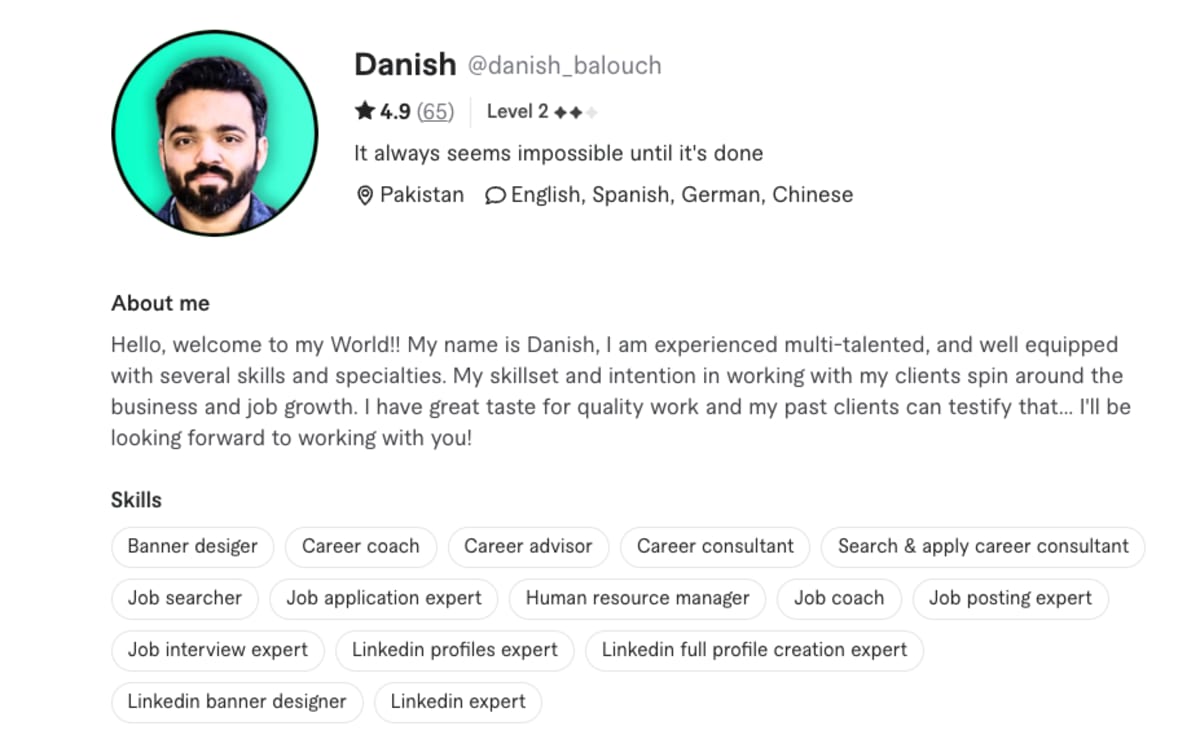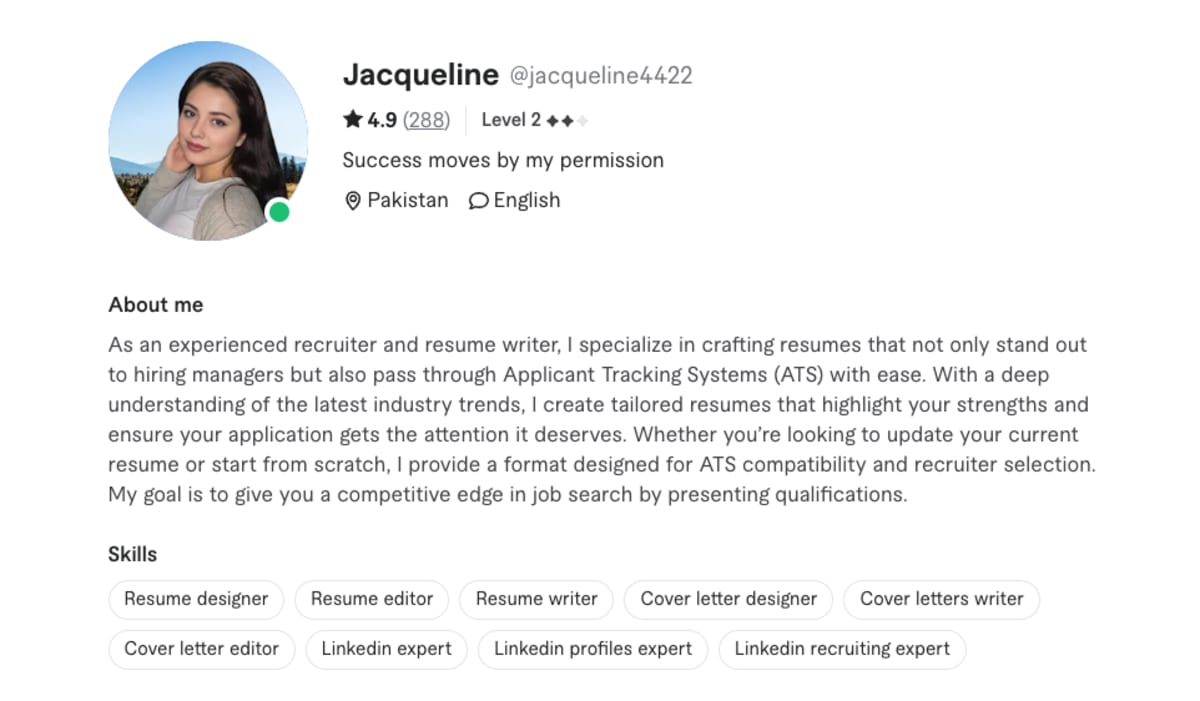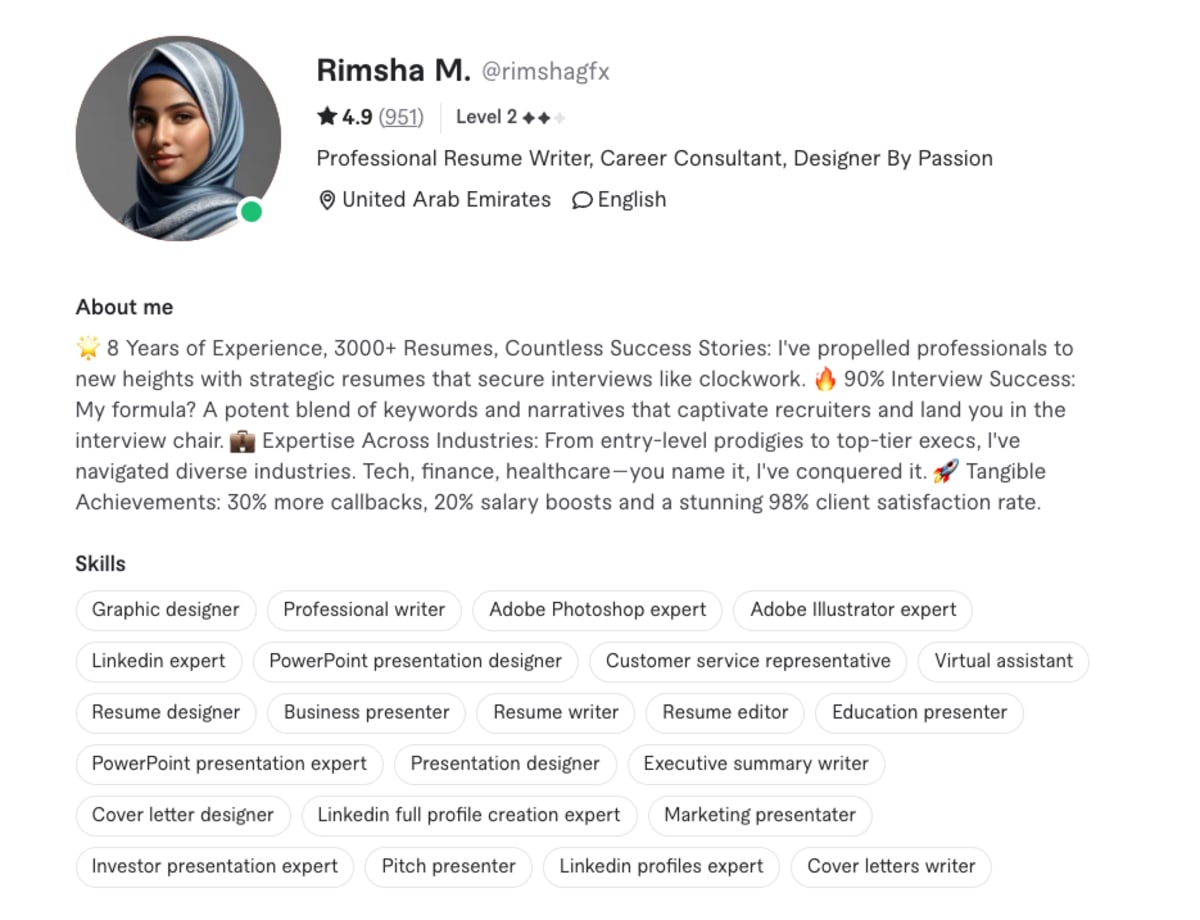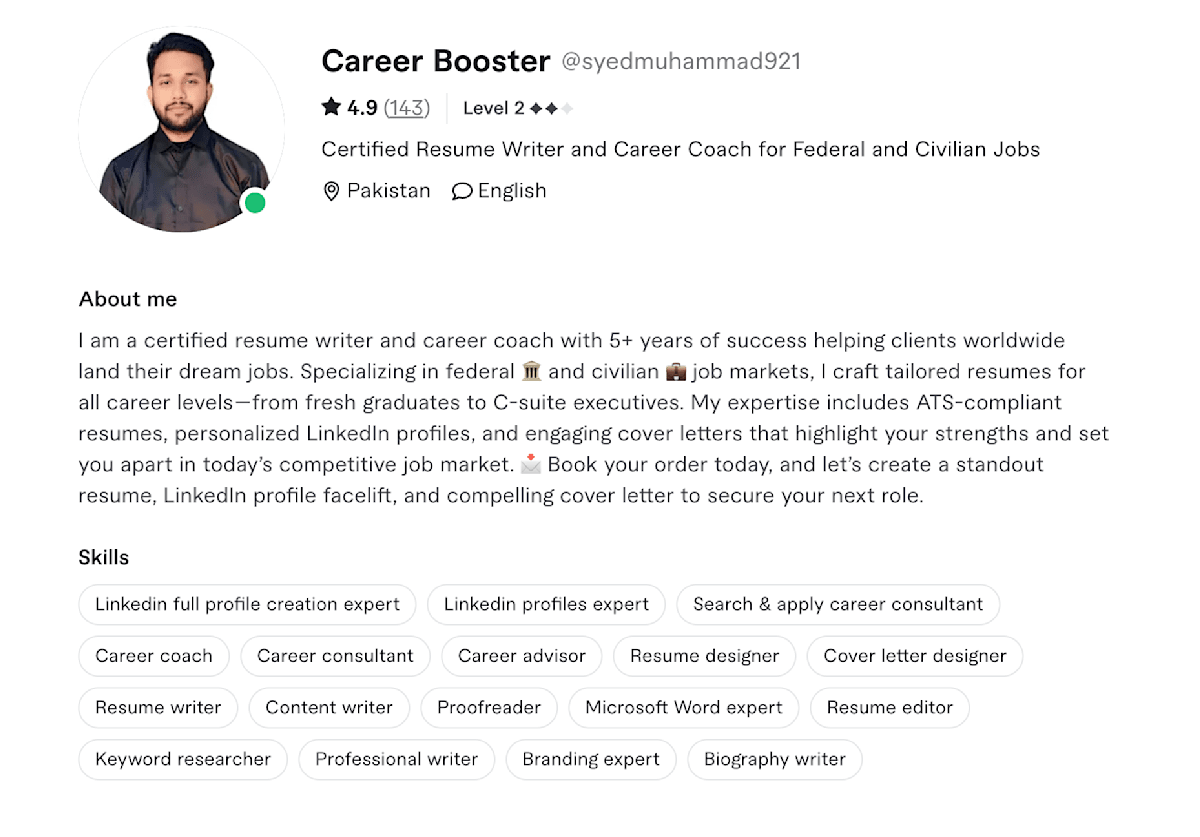Mastering ATS-Friendly Resumes: Expert Tips for Balancing Keywords and Readability
Creating an ATS-friendly resume is crucial. Use relevant keywords tied to achievements and a clean, readable format to showcase your value and stand out to recruiters.
 January 21, 2025
January 21, 2025 4 minute reading
4 minute readingCrafting an ATS-friendly resume is essential in today’s competitive job market. The reason? Applicant tracking systems (ATS) often serve as the first hurdle in the hiring process, filtering resumes before they reach recruiters.
While optimizing your resume for ATS is critical, it’s equally important to maintain a natural flow that appeals to human readers. Achieving this balance allows your resume to communicate your value effectively.
To help you excel, we’ve compiled tips for crafting ATS-friendly resumes from Fiverr experts, including resume writers and career coaches, who share their insights on crafting resumes that stand out to both systems and decision-makers.
💡TL;DR
Do’s
Stick to simple layouts and standard headings
Embed keywords in context using STAR or XYZ formulas
Customize for each job description, reflecting relevant skills
Highlight measurable results and real-world applications of skills
Use tools to ensure keywords and layout align with ATS requirements
Incorporate synonyms and related terms strategically
Ensure your resume reflects your actual qualifications
Use modern fonts, proper spacing, and clear hierarchy
Dont's
Overuse graphics or complex designs
Stuff keywords unnaturally or isolate them in long lists
Submit a generic resume for multiple applications
Copy and paste job descriptions or keyword lists
Assume all ATS systems function the same
Repeat the same keyword excessively
Mislead with false information or gimmicky white text keywords
Use fancy fonts, colors, or distracting embellishments
1. Research and incorporate relevant keywords
The foundation of an ATS-friendly resume is understanding and integrating the right keywords. These terms, drawn from the job description, should be placed strategically in your resume to align your skills with the job requirements.
Danish Balouch, a personal growth specialist, explains:

“Balancing keywords for ATS and natural readability is like cooking a great meal. You need the right ingredients (keywords) but also a delicious presentation (flow).”
Connect with SellerStart by carefully analyzing the job description and identifying key phrases such as “project management” or “customer care.” These keywords should be incorporated naturally into your skills section, experience, and summary. This way, they flow naturally without overloading the resume with repetitive terms.
2. Link keywords to achievements
When you pair keywords with measurable results, it highlights your ability to apply relevant skills in practical scenarios and delivers a strong message to both ATS and recruiters.
Mei, a professional resume writer, shares:

“Instead of simply listing them, link the keywords to tangible achievements or responsibilities. For example: Improved client engagement by 20% through targeted CRM strategies.”
Connect With SellerRather than creating a laundry list of skills, describe your accomplishments in a way that integrates keywords naturally. This demonstrates your expertise while keeping the resume compelling and easy to read.
3. Use clear formatting and readable layouts
ATS systems often cannot parse resumes with complex designs, so maintaining a clean and straightforward format is crucial. Use standard section headers like “Work Experience” and “Skills” and stick to simple fonts and bullet points. This helps ATS systems scan your resume accurately and makes it easy for recruiters to read.
Jacqueline4422, a professional writer and translator, advises:

“Readable layouts with clear headings and bullet points make your resume understandable for both ATS and human recruiters. A recruiter should understand your resume at first glance.”
Connect with SellerAlso, avoid graphics, charts, or overly decorative fonts, as they can confuse ATS software and distract human reviewers.
4. Balance keywords and readability
While keywords are essential for ATS compatibility, your resume should still feel natural and engaging to human readers. The key is to integrate these terms naturally into the narrative of your achievements and responsibilities.
Rimsha M., a writing and translation specialist, likens this process to baking:

“Think of keywords as the flour in your cake—essential for structure, but you don’t want it to overpower the flavor. Weave them into your experience, achievements, and even your summary.”
Connect with SellerIt’s also smart to weave keywords into the tangible results you’ve achieved. For example, instead of saying, “Proficient in Excel,” write, “Optimized reporting processes using advanced Excel functions, reducing analysis time by 30%.” This way, your resume meets ATS requirements while remaining compelling to hiring managers.
5. Test and refine your resume
Creating a polished resume doesn’t end with drafting—it requires compatibility testing, proofreading and editing, and thoughtful optimization to make it stand out. Aligning your resume with job descriptions and meeting ATS requirements is just one step in the process.
Career Booster, a resume writing and career coaching expert, recommends:

“After updating your resume consider using ATS-friendly tools to test its compatibility and optimize it further.”
Connect with SellerBeyond technical considerations, focus on feedback from trusted peers or mentors who can highlight areas for improvement in both content and presentation. They might catch unclear phrasing, overly technical language, or missing accomplishments and give you writing advice that could strengthen your resume.
Craft a balanced, ATS-friendly resume
An ATS-friendly resume combines thoughtful keyword integration, a clean format, and compelling storytelling to impress both automated systems and recruiters.
By identifying relevant keywords, linking them to measurable achievements, and testing your resume for compatibility, you can create a document that communicates your qualifications effectively.



